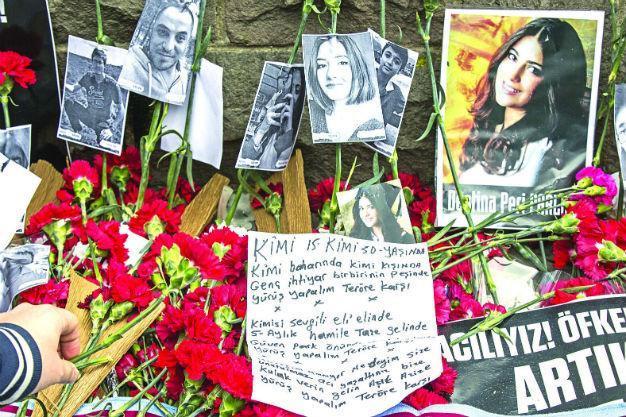Interior Ministry initiates large investigation over bomb attack in Ankara
ANKARA
 Turkey’s Interior Ministry has launched an extensive investigation to determine any security and intelligence gaps in a March 13 car bomb attack in central Ankara that claimed at least 37 lives.
Turkey’s Interior Ministry has launched an extensive investigation to determine any security and intelligence gaps in a March 13 car bomb attack in central Ankara that claimed at least 37 lives. The Interior Ministry identified the bomber as 24-year-old Seher Çağla Demir, an outlawed Kurdistan Workers’ Party (PKK) member, while media reports were looking into the existence of a second or third suspect in the attack.
Taking action upon an order by Interior Minister Efkan Ala, civil and police chief inspectors will conduct an investigation to determine whether there were any security and intelligence failures ahead of the attack, the reasons why the attack could not be prevented and whether any negligence by the intelligence units and security teams occurred with the incident.
Authorities will also probe any official negligence during the period in which the vehicle was brought to Ankara.
The inspectors will also investigate how the attack could not be prevented despite a new security mechanism that was announced by Prime Minister Ahmet Davutoğlu on Feb. 20 after the Feb. 17 Merasim Street bomb attack on military shuttles in Ankara, as well as how the bomb-laden car was not noticed when it entered a lane that is open only for the use of buses on March 13.
At least 29 people were killed in the former car bomb attack in Ankara.
The vehicle was reportedly bought on Feb. 19 and left the southeastern province of Şanlıurfa on Feb. 20, traveling through the provinces of Gaziantep, Hatay and Diyarbakır before reaching its final destination, Ankara.
Inspectors will also look into how the vehicle was not noticed while it was in Ankara for 15 days prior to the attack, whether there was any intelligence information about the attack and, if so why, the attack could not be prevented.
After being completed, the report will be presented to the Interior Ministry and to the Police Department to determine whether any officers accused of negligence should be relieved of their duties.
Meanwhile, after Atatürk Boulevard, where the March 13 attack occurred, was reopened to traffic, many people come to the site to pray and to place red and white flowers.
The explosion was caused by a 300-kilogram bomb consisting of a mix of RDX, TNT and ammonium nitrate, a security source said March 16.
Both RDX and TNT have military and industrial applications while ammonium nitrate is an explosive compound that is mainly used as a fertilizer but is often added to homemade bombs.
The source, who spoke to Anadolu Agency on condition of anonymity due to restrictions on speaking to the media, said the composition and scale of the bomb was similar to the device used in an attack on military buses in Ankara on Feb. 17 that killed 29.
















